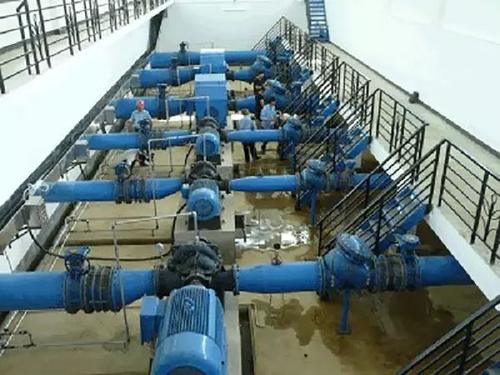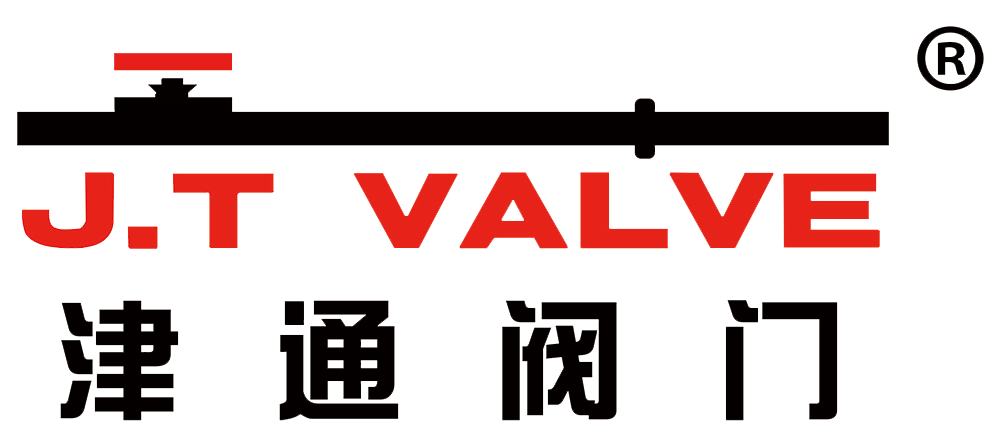
The conventional water supply process in waterworks can not get water from raw water, flocculation and sedimentation in sedimentation tank, filtration in filter tank, and even output water from pump house in later period without the use of valves. But in different parts of the valve for the selection of requirements are very different, correct, reasonable choice, you can get the valve economic life and performance. The main differences lie in valve caliber, valve material, valve type and valve control method. This article mainly carries on the brief analysis regarding the tap water plant's valve selection. 1. The function of the valve in the urban and rural water supply network, in the process of water resources distribution, it is indispensable, it plays the role of a transport intermediary, the urban and rural water supply network is widely used, the construction project is also very large, different types of urban and rural water supply networks can meet people's different needs. In normal management, valves are not always used, but in an emergency, a qualified valve must be able to achieve flexible control of water flow control. Valve in the selection, the main concern type, materials, manufacturers, production technology, from all aspects to determine the quality of the valve in line with the standard. 2. General Water System of waterworks valve distribution 2.1 raw water intake process valve, the head of the raw water valve is characterized by a larger valve size, do not need to operate frequently, most belong to a year or even several years only need to operate once, Valve long-term in normally open or normally closed state. Therefore, from the control method, more than 95% of the selection is manual valve, from the valve type are gate valve or butterfly valve, because the head loss of gate valve is better than Butterfly Valve, head valve gate valve slightly more than butterfly valve. The caliber concentrates in 1200 ~ 1600mm, also has the valve caliber 3000mm or more than 3000mm on the head inlet pipe. 2.2 sedimentation tank valve, sedimentation tank valve is the main inlet valve, outlet valve and isolation valve. The outlet valve is normally open, the isolation valve is normally closed, and is operated once a year. Therefore, manual gate valves are used for both valves, ranging in size from 2200 to 1800 to 1200 to 840. The inlet valve of the sedimentation tank bears the important responsibility of water distribution, which requires frequent regulation, reliable performance, and distributed in front of each sedimentation tank, distributed more widely, all using the electric control valve with intelligent control system. It is a key link that determines the water volume of the sedimentation tank and the balance of the system. It is particularly important for the water production line to be a system that dynamically adjusts according to the water output, and it also needs to be dynamically adjusted by PID. In this case, for the total travel time of the valve, the allowable starting and stopping frequency will have corresponding requirements. 2.3 filter valve. The common filter is a four-valve filter, which is also the basic configuration of the filter. That is, no matter what kind of filter are at least inlet valve, drain valve, flush valve and water valve these four types of valves. Of course, there are also many five-valve, six-valve (v-type filter) or even seven-valve filter, also equipped with air-impact Valve, initial filter valve or equipped with an additional inlet valve and so on. From the valve structure to distinguish the clean water valve and Wash Valve usually choose butterfly valve, this is mainly because the clean water valve and wash valve are installed in the pipeline, and the clean water valve needs frequent regulation, the flushing valve will also have the need to regulate the intensity of flushing. And water intake and drainage is usually carried out through channels, so the intake valve and drainage valve are basically chosen gate valve. The diameter of the flushing valve of the filter is slightly larger than that of the clean water valve. According to the size of the filter, the flushing intensity and the flushing time, the flushing valve is basically DN600 ~ DN800, while the clean water valve is DN400 ~ DN600 according to the flow rate and filtering speed. The dimensions of the inlet and outlet valves are related to the designed flow rate of the settling tank and the channel dimensions. 2.4 Pump Room Valve, pump room valve is the main pump unit on the inlet valve, outlet valve, Inspection Valve and check valve. The first three kinds of valves are basically butterfly valve, the difference lies in the control mode. The inlet and service valves only need manual valves as they are normally open. The choice of the pump outlet valve first needs to meet the pump can close the valve to start and stop, if taking into account the use of the outlet valve to regulate the amount of water, so that the pump has different working conditions to meet the needs of the factors, the outlet valve also needs to be controlled by an adjustable intelligent device, and the check valve should be equipped to close the valve quickly when the pump unit stops unexpectedly in order to prevent the pump from turning back for a long time, and to avoid the occurrence of water hammer when the pump stops. 2.5 the characteristics of the valves and dosing systems in water plants determine that the valves used in the above-mentioned systems are small in diameter and small in flow rate, but high in flow rate regulation, high in accuracy and fast in regulation. Therefore, the flow rate control valves are usually chosen, this valve makes the medium flow capacity only depends on the valve itself structure, so that the flow of the completion of the regulation. Water Plant dosing system pipeline media is mainly aluminum sulfate, ammonium sulfate, sodium hypochlorite and other solutions, which requires the valve also has the ability to resist corrosion. Ammonium sulfate has a corrosive effect on copper, copper materials can not be used to make the valve, the general use of stainless steel ball valve or UPVC ball valve. Sodium hypochlorite corrosion of steel, iron, steel can not be used to make the valve, generally used UPVC ball valve or polytetrafluoroethylene lined with hastelloy alloy valve core valve. In addition, the dosing system will also use stainless steel ball valve, UPVC ball valve or butterfly valve as a switch valve, switching valve. 3, the choice of valve basis, the first step, the use of the selected valve, operating conditions and control mode. The second step is the installation size and the outline size, and the connection way of the pipeline. The third step, the requirements of the valve fluid characteristics: head loss, flow characteristics, sealing grade. Fourth, the nature of the working medium: working pressure, working temperature, corrosion performance, whether it contains solid particles. Fifth, if the valve is to be used for control, the following additional parameters must be determined: Control Mode, flow requirements, pressure drop in normal flow, pressure drop at closure, inlet pressure of the valve. 4, the selection of the valve steps, the first step, the valve sealing performance to meet the requirements of the media. The second step is to determine the process requirements, that is, to determine the pressure, flow and back pressure in the field pipeline, then determine the nominal diameter of the pipeline and the diameter of the valve seat hole, determine the type and type of valve. The third step, according to the pipe diameter, field working conditions, select the type of valve, combined with the second step process parameters, select the valve, at the same time according to the installation position of the valve, determine the structural length of the selected valve, flange connection type and size, after opening and closing the valve height direction of the size, connecting the size and number of bolt hole, the overall size of the valve. The fourth step, according to the pipeline transportation medium, the work pressure, the work temperature determines the valve shell and the inner piece material. The fifth step, according to the transmission form choice transmission mechanism, the Water Plant's butterfly valve is mainly multi-rotation rotation mechanism, the gate valve is the direct travel transmission mechanism. The sixth step is to determine the control mode, for the air control system is the cylinder and matching transmission mechanism choice, for the electric control system is the electric actuator choice. For the choice of electric actuator, the speed ratio and output Torque of the actuator, the type of interface, the speed and power of the motor are determined according to the whole travel time and the Torque of the valve. The seventh step, consider the actuator protection level, communication method, whether to choose SCR and other configuration. The eighth step, the use of existing information: Valve Product Catalog, valve product samples and so on to select the appropriate valve products.


